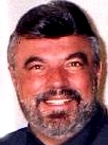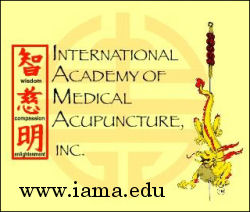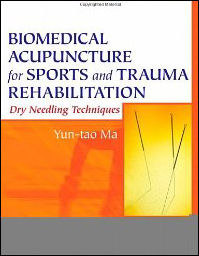Acupuncture & TCM Articles

Acupuncture Articles
by John A. Amaro L.Ac., Dipl.Ac.(NCCAOM), DC
 Dr. Amaro is an internationally known author, lecturer and practitioner beginning his practice of Acupuncture and Chiropractic in 1971. He has led 13 diplomatic Acupuncture study tours of The People's Republic of China escorting more than 500 doctors and practitioners. He has personally studied Acupuncture in nine separate Asian nations. Dr. Amaro is an internationally known author, lecturer and practitioner beginning his practice of Acupuncture and Chiropractic in 1971. He has led 13 diplomatic Acupuncture study tours of The People's Republic of China escorting more than 500 doctors and practitioners. He has personally studied Acupuncture in nine separate Asian nations.
He has received Certification in Acupuncture through the Columbia Institute of Chiropractic in 1973. This was one of the first Acupuncture postgraduate education programs for physicians in North America commencing in 1972.
He has been certified by the Waseda Acupuncture College in Tokyo, Japan in 1974 and graduated from the Chinese Medical Institute, Kowloon, China in 1976. He had previously taken postgraduate studies at the Tai Chung Medical School Taipei, China 1973.
When Acupuncture becomes “Dry Needling”
John A. Amaro L.Ac., Dipl.Ac.(NCCAOM), DC
In 1970 on my return to civilian duty having served in the U.S. Army as a combat medic, I became one of the first newly formed paramedics in the nation while I was trying to earn enough money to afford to enter into practice. As a result of my interest in emergency medicine, I would read the medical journals lying around the station devoted to that topic on a regular basis. To this day I recall one particular article which caught my attention and have thought about often.
The article focused on the administration of saline or magnesium sulfate for acute (or chronic) hip pain via hypodermic needle injection into a precise location on the hip. The article went through great detail into describing exactly where the injection spot was to be made. This was done with the use of explicit drawings of the musculature and skeletal relationship of the pelvis. It was further elaborated that it was essential to hit precisely the exact spot as to inject into any other location does not yield the same outstanding clinical response experienced by other practitioners. The precise location that was described is what is known in acupuncture as “GB30’ (Huantiao).
When a medical physician injects local anesthetic, saline, corticosteroids, or other agents into a trigger point or known acupuncture points, it is medically referred to as trigger point injection. However, when the same practitioner utilizes a needle into the same precise point without the administration of a substance, it is today, globally referred to as “dry needling’. The term “wet needling’ does not exist, it is simply known as trigger point injection therapy.
Trigger points (TrPs) described by Drs Travell and Simons in the mid 1960´s are hyperirritable spots in skeletal muscle which are painful on deep palpation and gives rise to referred pain and motor dysfunction. They are found in palpable taut bands of skeletal muscle. They are extremely sensitive to palpation and will produce referred pain for the associated muscle and often time´s remote from the TrP itself. The most frequently affected sites are the trapezius, supraspinatus, infraspinatus, teres major, lumbar paraspinals, gluteal and pectoralis muscles. Myofascial pain syndromes are regional painful muscle conditions with a direct relationship between specific trigger points and its associated pain region. They are commonly seen in both acute and chronic pain conditions. It has been said that myofascial trigger points are the most commonly missed diagnosis in chronic pain patients.
Medically, the injection of trigger points with a variety of substances to include saline, magnesium sulfate, corticosteroids, local anesthetic, glucose etc. have been used to deactivate TrPs. It appears that each of the substances injected all work to treat trigger points; however research has shown that the pain relief obtained is apparently not dependent on the specific properties of the substance but the precise location of the point to be injected and the stimulation of the needle itself. This particular action is apparently the same identical mechanism which is classically known as acupuncture.
In 1979 Dr. Karel Lewit of then Czechoslovakia now the Czech Republic, reported of his stunning success with a large number of patients with musculoskeletal pain by employing nothing more than what is described as “dry needling’. Dry needling is a therapeutic effect of needle stimulation directly to trigger points without the use of injection. Dry needling utilizes a solid filament needle as is used in the practice of acupuncture its gauge varies on the area of treatment. It mechanically disrupts the integrity of the dysfunctional endplates within the trigger area resulting in mechanical and physiological resolution of the TrPs. It also shows a strong pain inhibitory role by opiods released through needle stimulation of A delta receptors. The approach of dry needling is based on Western anatomical and neurophysiological principles. This is not to be confused with the Traditional Chinese Medicine (TCM) rationale for the stimulation of acupuncture points.
There are similarities but very significant differences between TCM style of acupuncture and dry needling. Acupuncture follows rules and beliefs which have been established since ancient times whereas; dry needling ignores ancient acupuncture philosophy. Most if not all of TCM is based on pre-scientific ideas whereas, dry needling is totally based on modern scientific, neurophysiology and anatomy. Dry needling is purely for pain relief and is based on recent understanding in pain science, there is much less mystique surrounding dry needling concerning pain abatement by the scientific community. TCM acupuncture can treat a vast range of somato viscero illnesses as well as being effective in pain relief. In contrast, dry needling is specifically used for pain control of the musculo skeletal system. Therefore, acupuncture will always be a viable treatment option for both internal disorders as well as musculo skeletal involvements.
In the evaluation of pain there are two primary types: the neuropatic pain from a damaged or dysfunctional nerve and the nociceptive pain which is very common to include osteoarthritis, headaches, sprains strains, myofascial pain etc. both of these pain types have shown extremely good response to dry needling of associated trigger points.
Dry needling is quickly becoming a very popular modality in medical and chiropractic offices nationally as musculoskeletal complaints are one of the most reported conditions to seek professional attention. By deactivating the TrPs by use of needle stimulation directly into the trigger point the reported pain relief is noteworthy. It does not require a background into the theoretical foundations of Chinese Medicine nor does it deal with the myriad of ancient laws surrounding the practice of acupuncture. It is quick, easy and very effective. In acupuncture it may sometimes be referred to as “surround the dragon’ which is simply to stimulate painful points in and around the area of the involvement. My personal evaluation of this approach of needling for musculo skeletal pain is that it is directly related to the musculo-tendino meridian as opposed to the primary meridians of the body.
Dry needling bases itself totally on the neurophysiological modern understanding of pain as it surrounds hyperactive trigger points in a specific area. The diagnosis is totally based upon the palpation of the physician as trigger points are invisible to X-ray, CT scan or MRI. Contracted muscle fibers provide resistance to the needle and may cause a “needle grasp’. This phenomena causes a deep ache which in acupuncture is described as ‘DeQi’.
Biomedical Acupuncture for
Sports and Trauma Rehabilitation:
Dry Needling Techniques
 
In essence both acupuncture and dry needling both make use of the needle as its primary modality. Trigger Points can be likewise influenced by high impact percussion over the area which is non-invasive however may have less response than the needle stimulation.
Around the world physicians of all disciplines are utilizing dry needling over trigger points with outstanding clinical success. It is not referred to as acupuncture but as “dry needling’ and is wholly based on modern understanding of neurophysiology and muscle anatomy which acupuncture does not classically consider.
Its growth as a medically accepted therapy is preceded only by the growth of acupuncture in North America. Even though there are similarities between acupuncture and dry needling, the primary difference is the rationale on how the condition is approached. It is an internationally accepted scientific, neurophysiologic treatment approach which is gaining wide popularity as its growth amongst the medical professions accelerates.
As dry needling becomes more mainstream you will undoubtedly begin to hear much more about this procedure. Just this morning, a prospective patient phoned my office and inquired if I did dry needling. This is a new trend in healing which even though the procedure has been around a number of years is now beginning to attract a great deal of attention. I feel it is imperative the practitioners of acupuncture and TCM styles of acupuncture absorb the philosophy and procedure of dry needling as an adjunct of musculoskeletal pain control into their practice. It is a viable, explainable and scientifically accepted pain control procedure which is going to gain great notoriety with or without the acupuncture practitioner. It is much easier to swim with the current than against it! Personally, I dislike the term “dry needling’ it offends me, however like it or not it is here.
| 